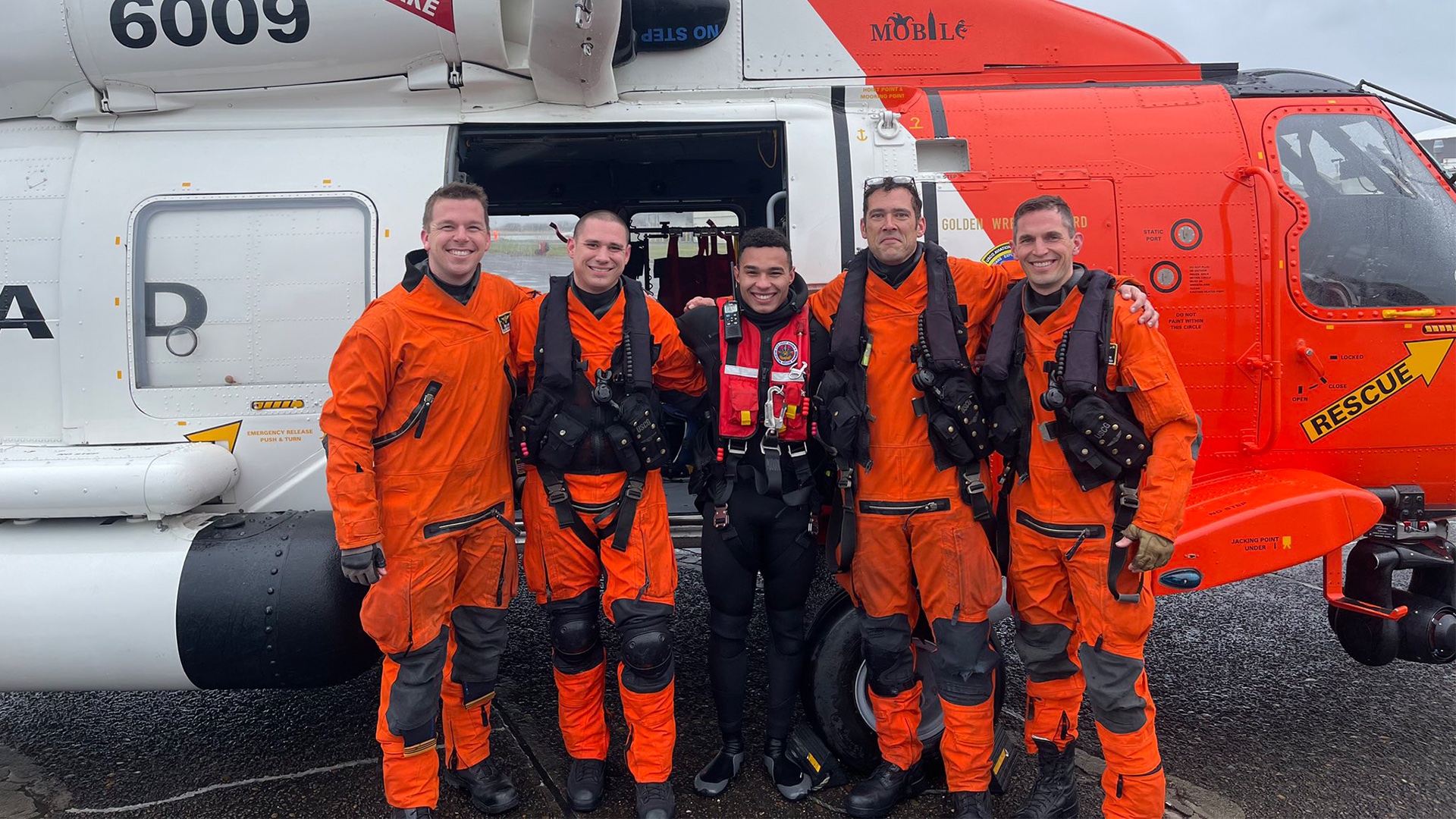

Last Friday, U.S. Coast Guard personnel conducted an audacious rescue, pulling a man from the big waves and choppy seas of the Oregon Coast. For the rescue swimmer, Aviation Survival Technician 3rd Class John “Branch” Walton, it was a fitting way to complete the Coast Guard’s Advanced Helicopter Rescue School, as he and his classmates were set to graduate just a few hours later.
The Advanced Helicopter Rescue School is a week-long course that “focuses on advanced rescue techniques including cliffside rescues, urban search and rescue, and surf rescues,” according to the Coast Guard.
The class is held during the late fall and winter months when the surf conditions off the coast of Oregon are at their roughest.
“AHRS is a week-long course for pilots, flight mechanics, and rescue swimmers. Currently, there are 10 total student weeks a year during the late fall and early spring months,” said Chief Aviation Survival Technician Brad Pigage, an instructor for the school. “Rescue swimmers are the only aircrew members who have a requirement to attend. They must attend within 3 years of their initial qualification and re-attend every six years after that. Pilots and flight mechanics are chosen by their commands to attend each year when class solicitations are open.”
Subscribe to Task & Purpose Today. Get the latest military news, entertainment, and gear in your inbox daily.
The rescue began on Feb. 3, when the Coast Guard received a distress signal from a boat about 6 miles west of the mouth of the Columbia River. An MH-60 Jayhawk on a routine training sortie was diverted to Coast Guard Air Station Astoria, where the Advanced Helicopter Rescue School is conducted, to pick up a rescue swimmer. Needing only one rescue swimmer for the mission, the students — who were in class that morning — played a quick game of “Rock, Paper, Scissors” to determine who would be sent out, according to Lt. Stephen Nolan, a spokesman for the 13th Coast Guard District.
“When we got that call there were seven other rescue swimmers that were more experienced than I am,” said Walton. “They trusted me and gave me the opportunity to go out there when any of them could have gone out there. They took that initiative to make sure the newer people got the experience.”
Arriving on the scene, the Jayhawk crew along with rescue boats from National Motor Lifeboat School and Coast Guard Station Cape Disappointment, found a man aboard a 35-foot yacht taking on water and foundering amid high wind speeds and 20-foot waves.
Coast Guard personnel initially tried to pass a flotation device to the man, but the extreme conditions made rescue by boat impossible, at which point Walton was lowered into the water. As he swam towards the vessel, another giant wave hit, capsizing it and sending its occupant into the water.
However, Walton was able to retrieve the man, swimming with him until they were both hoisted back to the Jayhawk.
As for the would-be mariner, his day was only beginning. When taken to a hospital to treat his minor injuries, he was identified as 35-year-old Jericho Labonte, a British Columbia resident wanted there for criminal harassment, mischief, and failure to comply. Astoria, Oregon police had been looking for him since Feb. 1, when he posted a video of himself on social media leaving a dead fish in front of a house featured in the 1985 film “The Goonies” and dancing on the property. He was also suspected of stealing the yacht, which had been reported missing by its owner the day before the rescue.
As for Walton, now stationed at Coast Guard Air Station North Bend in Coos Bay, Oregon, it was his first rescue.
“It was extremely challenging — I actually didn’t know how to swim before I joined the Coast Guard,” Walton said. “I had a lot of people come along in my life and teach me how to swim. I am grateful for it because it helped me out for bootcamp.”
He graduated from the Advanced Helicopter Rescue School later that day, presumably after drying off.
The latest on Task & Purpose
- Marine shown fighting with San Diego hotel staff in viral video charged with assault and battery
- Air Force cadet died of blood clot in lung, autopsy finds
- Airmen prepare to bid farewell to beloved ‘Big Sexy’ refueling tanker after 30 years of service
- The US appears to have used its missile full of swords in an airstrike in Yemen
- What the chances of a war between the US and China actually look like, according to experts
Want to write for Task & Purpose? Click here.
